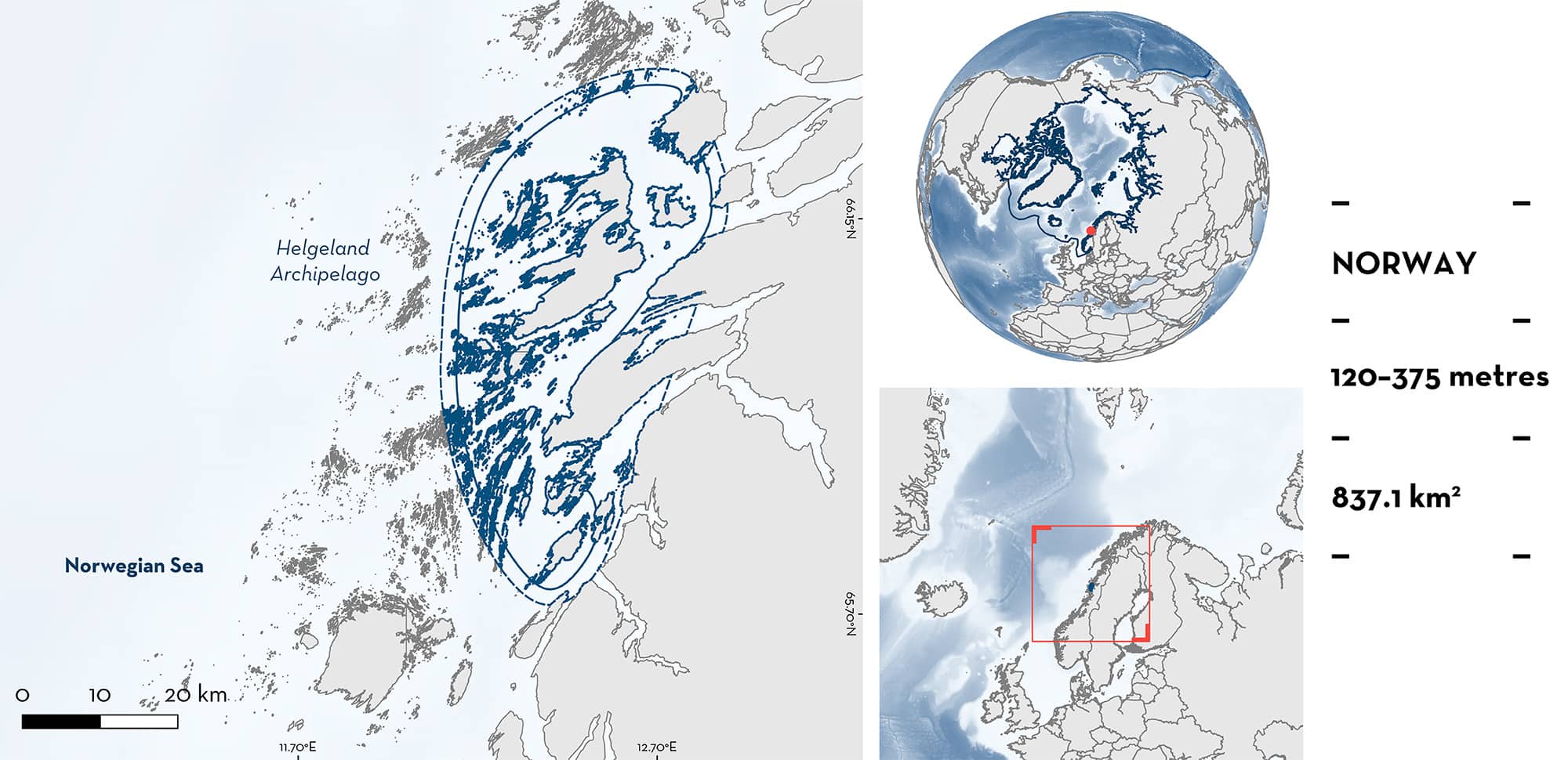ISRA FACTSHEETS
ISRA FACTSHEETS
POLAR WATERS REGION
Helgeland Archipelago
Summary
Helgeland Archipelago is located off western Norway. This area surrounds the municipality of Dønna and includes adjacent waters around numerous surrounding islands. The area is influenced by freshwater and North Atlantic water currents which bring an influx of nutrient rich water. Within this area there are: threatened species and reproductive areas (Rabbitfish Chimaera monstrosa).
Download factsheet
Helgeland Archipelago
DESCRIPTION OF HABITAT
Helgeland Archipelago is located off west Helgeland, Norway. It encompasses the fjord system around the island of Dønna and includes waters adjacent to several smaller surrounding islands. To the northeast lay Løkta and Tomma islands, to the west lay Vandve and Åsvær islands, and to the south lay Herøy and Alsta islands.
The area is influenced by North Atlantic water current which runs northwards (Berglund et al. 2018). The deeper areas around fjords in the Helgeland region are influenced by a high velocity, barotropic current (Ellingsen 2004).
This Important Shark and Ray Area is subsurface and benthopelagic and is delineated from 120 m to 375 m based on the depth range of the Qualifying Species in the area.
CRITERION A
VULNERABILITY
One Qualifying Species considered threatened with extinction according to the IUCN Red List of Threatened Species regularly occurs in the area. This is the Vulnerable Rabbitfish (Finucci 2020).
CRITERION C
SUB-CRITERION C1 – REPRODUCTIVE AREAS
Helgeland Archipelago is an important reproductive area for one chimaera species.
Between 2019–2021, 462 Rabbitfish were caught from trawl fisheries operating in and around this area (Jac et al. 2022; Jac et al. unpubl data. 2024). Of these, 29% (n = 134) were determined to be neonates/young-of-the-year (YOY), measuring <20 cm total length (TL), and the species has an estimated size-at-birth of ~15 cm TL (R Jac unpubl. data 2024). Individuals in this size range were observed in every survey year: 2019 (n = 11), 2020 (n = 120), and 2021 (n = 3), demonstrating regular occurrence of early life-stages.
Within Helgeland Archipelago, 128 Rabbitfish were captured. Of these, 94.5% (n = 121) were neonates/YOY (Jac et al. unpubl. data 2024). Individuals in this size range were observed in three survey years: 2019 (n = 11), 2020 (n = 107), and 2021 (n = 3). Surveys were undertaken between September and October, but these individuals were only captured in September (Jac et al. unpubl data. 2024). Surveying across other months would be required to confirm any seasonality of reproduction in this area. This area is a particularly important fjord system as other areas of high density captures of this lifecycle stage in Norway are outside of fjords (Jac et al. unpubl. data. 2024). Additional temporal data are required to confirm seasonality in reproductive behaviour. This area has national importance as it has one of the highest catch records of Rabbitfish at this life-stage (R Jac pers. obs. 2024).
Download factsheet
SUBMIT A REQUEST
ISRA SPATIAL LAYER REQUEST
To make a request to download the ISRA Layer in either a GIS compatible Shapefile (.shp) or Google Earth compatible Keyhole Markup Language Zipped file (.kmz) please complete the following form. We will review your request and send the download details to you. We will endeavor to send you the requested files as soon as we can. However, please note that this is not an automated process, and before requests are responded to, they undergo internal review and authorization. As such, requests normally take 5–10 working days to process.
Should you have questions about the data or process, please do not hesitate to contact us.


